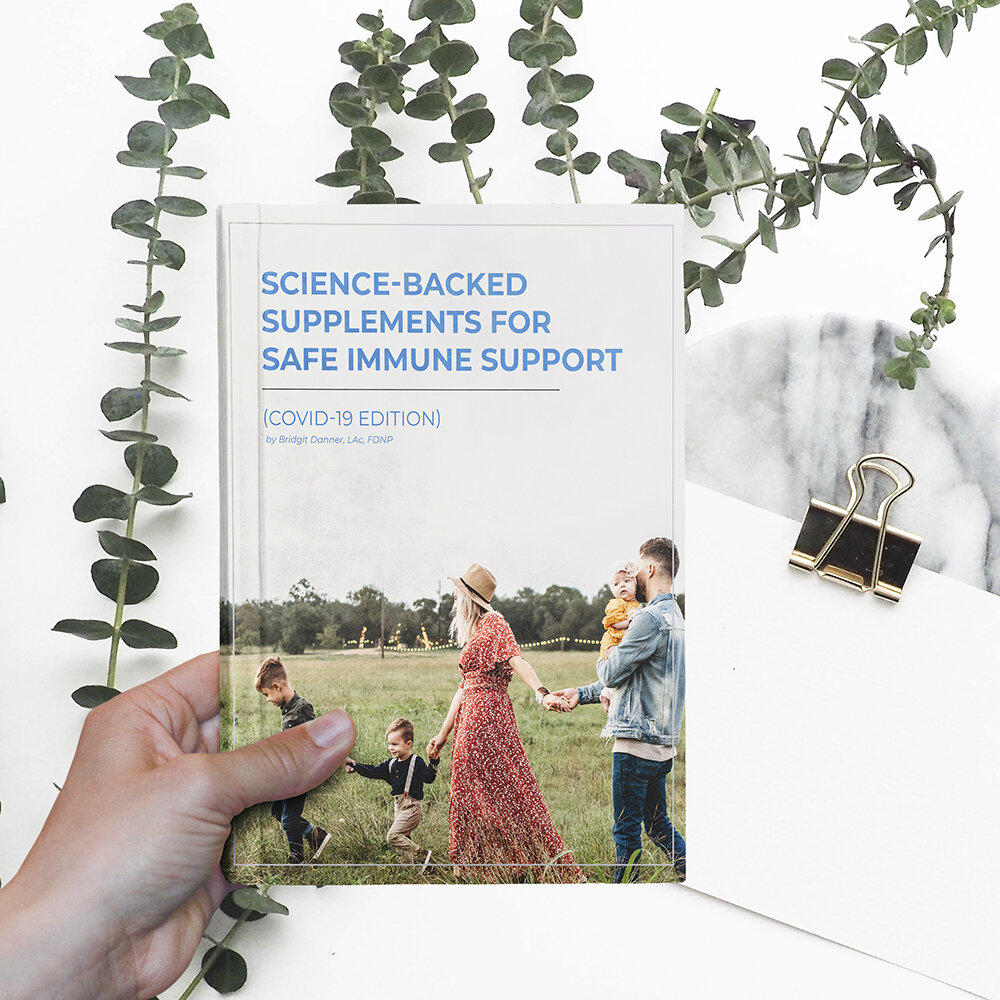The Good, the Bad, and the Ugly of Detox Metabolism
Nearly all chemicals are processed and detoxified through the liver. This includes things like hormones and waste products naturally produced in our bodies. It also includes somewhat more devious compounds like benzene, alcohol, and medications as well. If you’re looking for tips on how to remove toxins from your life check out these tips here.
In this article, we’re going to cover several topics. For starters, we’ll go over some of the key details about detoxification, detox & estrogen, advantages of broccoli, and broccoli sprout powder benefits.
How Does Detox Work?
Detoxification involves two phases aptly named Phase I and Phase II. Some compounds may only go through one of these phases and others may go through both phases. Not all detoxification is created equal though. Sometimes compounds can become more dangerous through the detoxification process if not processed correctly.
Contrary to popular belief, detoxification processes can occur in every cell of the body. (1) It just so happens the liver, kidneys, and even skin have more of the enzymes responsible for detoxification active.
Phase I Detox
The superfamily of enzymes responsible for phase I detoxification are collectively referred to as cytochrome P450 (CYP450). Phase I detoxification refers to something called “functionalization.” This process involves adding oxygen to the target chemical to make them more reactive. The location where oxygen is added is called the reaction site. (2) That’s why sometimes chemicals being processed by CYP enzymes can be more dangerous.It’s also a great reason why both phases of detoxification need to be balanced.
There are several unique forms of these enzymes that are specialized to breakdown specific chemicals. Four smaller groups within the CYP450 superfamily can be broken down even further. Below is an overview of each group’s general function. (2)
CYP1: The enzymes that break down things like hormones and medications belong to the group CYP1. When CYP1 breaks down polycyclic aromatic hydrocarbons (PAHs) and polychlorinated biphenyls (PCBs) they become incredibly toxic. If these metabolites do not get processed through phase II quickly, they can cause cancer. (2)
CYP2: The enzyme family CYP2 also helps breakdown xenobiotics, ketones, glycerol and fatty acids in addition to hormones and medications. (2)
CYP3: This is the enzyme you’ve been waiting to hear about. This group of CYP3 enzymes breaks down the world’s most popular drug, caffeine. Additionally, it metabolizes testosterone, progesterone, and activates PAHs. (2)
CYP4: The final enzyme family is CYP4. It is also the least understood member of the family. We do know that it helps to breakdown some drugs and medium-chain triglycerides. Like some of the other enzymes above, it can also activate other carcinogenic compounds. (2)
Phase II Detox
When a compound comes through phase II detoxification, that means it’s ready to “love water” and become hydrophilic. Whether a reactive site was created in phase I detoxification or it naturally had a reactive site, it doesn’t matter. At this stage, one of six different enzymes can add hydrophilic groups to the reactive site. This makes the compound water-soluble and ready to be excreted. (2)
Glucuronidation: The process of adding glucuronic acid is referred to as glucuronidation. Adding glucuronic acid to chemicals and metabolites in detoxification occurs in the liver, and to some extent the small intestines too. Up to 70% of medications pass through glucuronidation and are then excreted through bile. (2)
Sulfonation: Thyroid, estrogen, and androgen hormones are directly affected by sulfonation. The process of adding a sulfur group to these hormones, and other compounds, inactivates them. As a result, overactive or underactive sulfonation can result in significant side-effects. (2)
Glutathione Conjugation: Widely considered the most powerful antioxidant our body produces; glutathione supports phase II liver detoxification. Glutathione conjugation is typically triggered by molecules called reactive oxygen species (ROS). ROSs can damage cell membranes and lead to inflammation if left unchecked. Attaching glutathione to these compounds stops their damaging effects and allows through elimination. (2)
Amino Acid Conjucation: By now you’ve probably noticed a trend. Amino acid conjugation involves attaching an amino acid to the reaction site. The most common amino acid our liver uses is glycine. It is also the smallest amino acid. By adding an amino acid, compounds are less reactive and ready from excretion. (2)
Acetylation: Acetyl groups can be added to compounds like amines, amides, hydrazides, and certain drugs to reduce their damaging effects. Other than this, not much else is known about this pathway. (2)
Methylation: This is a huge buzzword in the functional medicine community. When it comes to detoxification methylation is the process of adding a methyl group. Methyl groups can come from things like SAMe and B vitamins. (2)
Liver: In with the Good, Out with the Bad
Now that we’re all experts on the various steps of detoxification, let’s talk about what we can do. Each one of these pathways can be influenced by the foods we eat and the toxins we’re exposed to on a daily basis. As you’ve probably guessed, sometimes this can be a good thing. Other times… not so much.
Take estrogen for example. It can be broken down into three different forms in the liver. Based on the chemical structure of these metabolites they’re often referred to as the 2-, 16-, and 4-pathway or even the good, the bad, and the ugly.
It appears the 2-pathway is the safest. It promotes normal cell activity and division. The 16-pathway falls in a grey area and may stimulate abnormal cell division. The 4-pathway is the least likely metabolic pathway, but the metabolite produced has been shown to be directly linked with carcinogenesis (cancer production). (3)
Bring on the Broccoli Detox!
No one should be asking “Is broccoli good for liver health?” Instead, they should ask “HOW good is broccoli for your liver?”
Broccoli belongs to a group of plants called cruciferous vegetables. Within these plants are several compounds that can enhance numerous points of detoxification. The best understood and most researched of these beneficial compounds is something called sulforaphane.
According to research, the sulforaphane found in broccoli seeds and sprouts can improve CYP1, CYP2, and CYP3 function in phase I detoxification. It can even enhance phase II detoxification by supporting glucuronidation and glutathione conjugation. (4) The health benefits of broccoli sprouts are nearly endless. Below are a few examples of how getting in more sulforaphane can impact your health!
Broccoli & Cancer
As we already touched on, broccoli can improve liver metabolism of estrogen. This leads to a decreased risk in the development of estrogen-dependent cancers, like breast cancer. But broccoli can fight against more than just these types of cancers. The sulforaphane found in broccoli can decrease the development of prostate as well as liver and colon cancers. (5)
Broccoli & Thyroid
Our thyroid gland is responsible for releasing thyroid hormones. Most of the hormones released by the thyroid are inactive T4. The liver accounts for about the activation of about 80% of our thyroid hormones. (6) When it becomes bogged down and overrun by free radicals and toxins, we often experience hypothyroidism. The sulforaphane and other glucosinolates in broccoli can change that! (7)
In addition to this, broccoli extracts may even be protective against thyroid cancers. Researchers believe this is due to broccoli’s ability to reduce oxidative stress. (8)
Broccoli & Inflammation
Broccoli benefits inflammation by reducing metabolic stress. One of the ways sulforaphane works is through structures on our DNA called antioxidant response elements (AREs). When compounds in broccoli bind to the AREs they initiate a process to increase our antioxidant production. This means broccoli is working as an anti-inflammatory. (9)
Broccoli & Autoimmunity
For all of the reasons we’ve already discussed, broccoli sprouts are a perfect food to help autoimmune conditions. By working on things like inflammation and toxins broccoli sprouts can help get the immune system under control. (10)
Broccoli & Immunity
Consuming cruciferous vegetables strengthens your intestinal lining and gut-mediated immunity, and you likely don’t eat enough of them. (source)
Broccoli sprout also boosts the immune system against viruses. A 2016 study “conclude(d) that nasal influenza infection may induce complex changes in peripheral blood NK cell activation, and that BSH (broccoli sprout homogenates) increases virus-induced peripheral blood NK cell granzyme B production, an effect that may be important for enhanced antiviral defense responses.” (source)
Broccoli & TBI
Surprisingly, early evidence is starting to find a role for sulforaphane and broccoli sprouts in traumatic brain injury (TBI) recovery. Researchers believe that healing can occur much faster by reducing oxidative stress and inflammation thanks to the compounds found in broccoli sprouts. (11) These compounds also help to detox the brain following any damage. (12) Much of these early findings are in animals though.
Broccoli Detox: Getting Started!
The health benefits of broccoli truly are astounding! Good thing you’ve got some options when it comes to reaping the power of broccoli. It’s important to point out that the broccoli sprouts and seeds have the greatest concentration of the active phytonutrients. Cooking can also reduce the amount of sulforaphane. Below are two easy options to get in all the sulforaphane you need!
Grow Your Own Sprouts
Broccoli sprouts are incredibly easy to grow. All you need are some broccoli seeds, glass canning jars, and ventilated tops. If you want a simple step by step guide on how to get started check out my easy guide here. How much broccoli sprouts to eat per day varies but a good place to start is 100mg.
Watch this recent video where I make an easy green drink with broccoli sprouts:
Detox Supplement with Broccoli Sprouts
The easiest and most assured way to get your sprouts in will be through supplements. Here we have my favorite broccoli seed and sprout product. It combines sulforaphane along with a special enzyme called myrosinase. This enzyme is found naturally in broccoli and helps to maximize the amount of sulforaphane that makes it into your body.
By supplementing you have better control over how much sulforaphane you are getting.
Additionally, this Broccoli Seed & Sprout supplement uses a delayed-release system. This allows you to reap the benefits of sulforaphane all day long and makes it one of the best liver cleanse supplements.
I accidentally did not research the cost of this supplement before I added it to our shop! It’s not cheap, but it requires only one capsule a day and it lasts for three months. And I priced it lower than the same competing supplement on other outlets.
SCIENCE-BACKED SUPPLEMENTS FOR SAFE IMMUNE SUPPORT
Are you wondering how to best support your immunity? Theories abound, but not all of them are based on facts. In this book, I only present the information I can back up. I’ll do some myth-busting and share some information on dealing with pre-existing conditions and keeping your immunity strong!
Get 10% off your first order when you grab my guide and arm yourself with the healthy facts!
Bridgit Danner, LAc, FDNP, is trained in functional health coaching and has worked with thousands of women over her career since 2004. She is the founder of Women’s Wellness Collaborative llc and HormoneDetoxShop.com.
Check out her easy 5-Day DIY Detox Guide here!













The thought of a coffee enema might leave you in shock, but it’s actually a practice that has been used for thousands of years. I’ve seen the correct implementation of coffee enemas truly transform energy, gut health, antioxidant status and more. Learn the right way to do a coffee enema!